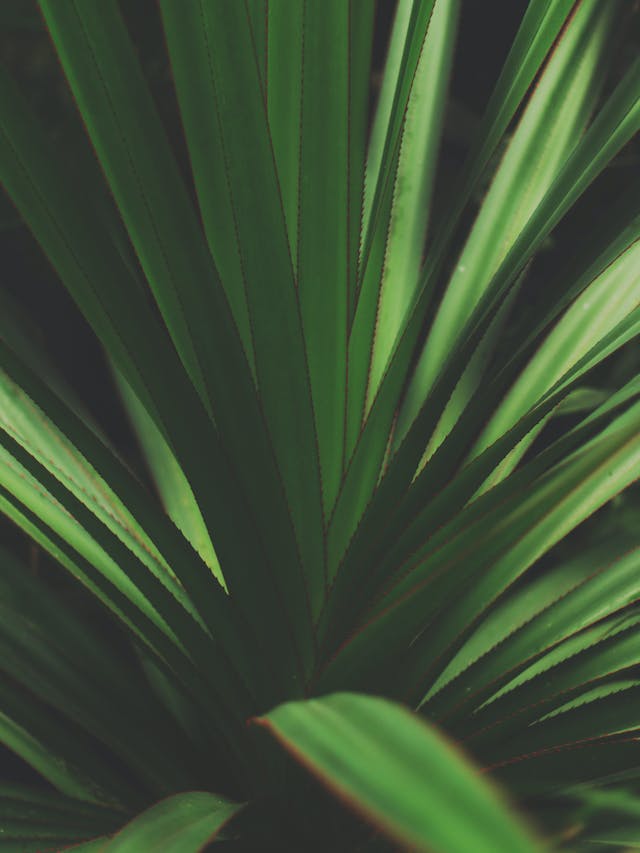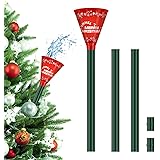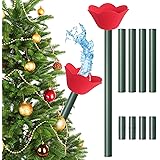Welcome to the fascinating world of yucca, where you’ll unlock a wealth of information about this unique plant. From its origins to its various uses and benefits, this article will delve deep into all things yucca. Whether you’re wondering how to care for a yucca plant or curious about the different species, we’ve got you covered.
So, if you’ve ever found yourself pondering “all about yucca,” you’ve come to the right place. Get ready to explore the extraordinary world of yucca and all it has to offer. Let’s dive in!
All About Yucca: A Versatile and Hardy Plant
Yucca plants have been captivating gardeners and plant enthusiasts for centuries. With their distinctive appearance and adaptability to various climates, yuccas have become a popular choice for both indoor and outdoor landscapes.
In this comprehensive guide, we’ll explore all aspects of yucca plants, from their origins and physical characteristics to their cultivation, care, and various uses. So, let’s dive into the fascinating world of yucca plants!
1. Origins and Physical Characteristics
Yucca plants belong to the Agavaceae family, which includes around 40 distinct species. Native to arid regions of North and Central America, yuccas are well-adapted to thrive in dry and sandy environments. Their striking appearance often features long, sword-like leaves that grow in a rosette pattern, creating a dramatic effect in any garden.
These leaves can range in color from green to blue-green and even have variegated patterns. Some yucca species produce beautiful, bell-shaped or creamy white flowers that add an extra touch of elegance to the plants.
1.1 Popular Yucca Species
Let’s take a closer look at some of the most well-known and widely cultivated yucca species:
- Yucca elephantipes:
Also known as the spineless yucca, it is one of the most popular indoor yucca plants. Its smooth, leathery leaves make it safe for households with pets or children.
- Yucca filamentosa:
Native to the southeastern United States, this yucca species is known for its sharp and fibrous leaves, which grow in dense clumps.
- Yucca gloriosa:
Commonly referred to as Spanish dagger, this yucca variety features long, arching leaves with stiff tips. It produces impressive clusters of white flowers in the summer.
- Yucca rostrata:
Recognizable by its distinctive blue-green leaves, this slow-growing yucca species can take several years to reach its maximum height. It usually develops a tall, branching trunk with a crown of foliage on top.
1.2 Versatility of Yucca Plants
Yucca plants are renowned for their versatility, making them suitable for a wide range of landscapes and applications. Here are some of the ways yucca plants can enhance your surroundings:
- Indoor Decoration:
Yuccas, such as Yucca elephantipes, are excellent choices for indoor environments. They can bring a touch of nature and elegance to your living spaces, while also improving air quality.
- Landscape Accents:
Yuccas’ unique appearance and architectural shape make them stand out as focal points in gardens or landscapes. Whether planted individually or in groupings, they create a visually striking scene.
- Drought-Tolerant Gardens:
Due to their ability to withstand dry conditions, yuccas are perfect for water-wise or xeriscape gardens. Their low water requirements make them an eco-friendly choice in areas prone to drought.
- Container Gardening:
Compact yucca varieties, such as Yucca filamentosa ‘Color Guard,’ thrive in containers, making them ideal for patios, balconies, or other small spaces.
- Medicinal and Culinary Uses:
Some yucca species have a long history of traditional medicinal uses, and certain parts of the plant, like the roots, can be used in herbal remedies. Additionally, yucca flowers and fruits are sometimes incorporated into culinary dishes in certain cultures.
2. Cultivation and Care
2.1 Selecting the Right Yucca Species
Before diving into the cultivation of yucca plants, it’s important to choose the right species that suits your climate, available space, and intended purpose.
Consider factors such as average temperature, sunlight exposure, soil type, and plant size requirements when making your selection.
2.2 Planting Requirements
When it comes to planting yuccas, consider the following guidelines:
- Sunlight:
Most yucca species require full sun exposure to thrive. Choose a location that receives at least six hours of direct sunlight per day.
- Soil:
Yuccas prefer well-draining soil with a slightly acidic to neutral pH. Sandy or loamy soil types are usually ideal for these plants.
- Watering:
While yuccas are known for their drought tolerance, young plants require regular watering until they establish their roots. Once established, reduce watering to every two to three weeks, allowing the soil to dry out between waterings.
- Fertilization:
Yuccas are generally low-maintenance and don’t require frequent fertilization. However, applying a balanced fertilizer in spring or early summer can promote healthier growth.
2.3 Pruning and Maintenance
Proper maintenance and occasional pruning can help keep your yucca plants healthy and visually appealing. Consider the following tips:
- Dead Leaf Removal:
Trim off any dead or damaged leaves to maintain the plant’s appearance and prevent potential pest or disease issues.
- Trimming Flower Stalks:
After the flowering period, cut back the stalks to the base to encourage new growth and maintain a neat appearance.
- Protecting from Extreme Cold:
In colder regions, provide winter protection for outdoor yuccas by covering them with frost blankets or bringing potted yuccas indoors.
3. Common Pests and Diseases
While yuccas are generally hardy plants, they can still be susceptible to certain pests and diseases. Being aware of these issues can help you identify and address any problems that may arise.
Here are some common pests and diseases that may affect yucca plants:
3.1 Pests
- Yucca Moth:
This small moth is the primary pollinator for yucca plants. While the moth itself isn’t harmful, its larvae can damage the seeds within the yucca flowers.
- Scale Insects:
Scale insects are tiny, immobile pests that attach themselves to the leaves and stems of yucca plants. They can weaken the plant and cause yellowing or distorted growth.
- Aphids:
Aphids are common garden pests that can infest yucca plants and suck out their sap, causing stunted growth and distorted leaves.
3.2 Diseases
- Root Rot:
Overwatering or soggy soil conditions can lead to root rot, a fungal disease that affects the roots of yucca plants. It can cause wilting, yellowing, and the eventual death of the plant.
- Leaf Spot:
Leaf spot diseases, caused by fungal pathogens, can lead to the development of brown or black spots on the leaves of yucca plants. They can be treated with appropriate fungicides.
- Crown Rot:
Crown rot is a bacterial disease that affects the base of yucca plants, causing the stems and leaves to turn brown and collapse. It typically occurs in overly moist conditions.
Read More: About Aquaponics Vs. Polyaquaculture
4. Yucca: Beyond the Garden
The benefits and applications of yucca plants extend far beyond traditional gardening. Let’s explore some additional uses and interesting facts about yuccas:
4.1 Yucca in Native American Culture
Yucca plants have played a significant role in Native American cultures for centuries. Native tribes used various parts of the plant for food, fiber, and medicine. Yucca fibers were often used to create baskets, clothing, and sandals, showcasing the plant’s versatility.
4.2 Yucca Extract and Natural Products
Yucca extracts and products are increasingly popular for their potential health benefits and natural properties. Yucca supplements are believed to have anti-inflammatory, antioxidant, and even cholesterol-lowering effects. Additionally, yucca extracts are commonly used as natural foaming agents in soaps and shampoos.
4.3 Landscaping with Yucca
Beyond gardens and residential landscapes, yuccas are also used extensively in commercial landscaping projects, particularly in arid regions. Their ability to withstand harsh conditions and their striking appearance make them an ideal choice for creating visually appealing and environmentally friendly landscapes.
4.4 Yucca: Wildlife Habitat
Yucca plants provide crucial habitat and resources for various wildlife species. Yucca flowers attract pollinators like bees and butterflies, while the plant’s dense leaves and tall stalks offer shelter for small critters and birds. Yuccas thus contribute to biodiversity and conservation efforts.
Yucca plants are not only aesthetically pleasing but also versatile, hardy, and adaptable to various environments. Whether you want to add a touch of beauty to your indoor spaces, create a striking landscape, or explore the numerous uses of yucca in different industries, this exceptional plant offers something for everyone.
By understanding their origins, cultivation requirements, and potential challenges, you can successfully grow and enjoy yucca plants in all their glory.
So, why not incorporate a yucca into your garden or explore the diverse applications of this remarkable plant?
Frequently Asked Questions (FAQs)
Yucca is a genus of perennial shrubs and trees belonging to the Agavaceae family. It consists of several species known for their evergreen, sword-shaped leaves and tall, branching flower spikes.
Yucca plants are native to arid regions of North and Central America, particularly in desert and dry woodland areas. They are commonly found in regions such as the southwestern United States and Mexico.
To care for a yucca plant, place it in a location with plenty of sunlight, as these plants require bright light to thrive. Water the plant sparingly, allowing the soil to dry out between waterings. Avoid overwatering, as that can lead to root rot.
Most yucca species are hardy and can tolerate cold temperatures to some extent. However, the specific cold-hardiness varies depending on the species. It is important to research the particular yucca species you have to understand its cold tolerance.
Yucca plants generally do not require frequent pruning. However, it is recommended to remove any dead or damaged leaves or stems to maintain the plant’s health and appearance. Be cautious when pruning, as the yucca’s leaves have sharp edges.
Yes, yucca plants can be toxic to pets, particularly cats and dogs. The plant contains saponins, which can cause vomiting, diarrhea, and other digestive issues. If you suspect your pet has ingested yucca, seek veterinary assistance immediately.
Yes, certain yucca species can be grown indoors as houseplants. These plants require bright indirect light and well-draining soil. It is important to provide enough space for the yucca to grow and choose a suitable pot that allows for proper drainage.
Yes, yucca plants produce flowers, typically in the form of tall, branching spikes. The flowers are usually white or cream-colored and can be quite showy. The blooming period varies depending on the species, but it often occurs in late spring or early summer.
Read More: About How Fast Do Rubber Plants Grow?
Final Thoughts
Yucca plants are a versatile and low-maintenance addition to any garden. With their unique shape and vibrant colors, they add visual interest to any landscape. Not only are yuccas aesthetically pleasing, but they also offer a range of benefits.
From their medicinal properties to their ability to attract pollinators, yucca plants bring numerous advantages. Whether you’re a seasoned gardener or just starting out, yuccas are a great choice. So, if you’re looking to learn all about yucca, look no further!
Auto Amazon Links: No products found.
Perfect Plants Christmas Tree Saver 8oz. | Easy Use Xmas Tree Preserver Food | Have Healthy Green Christmas Trees All Holiday Season
$9.97 (as of December 8, 2025 01:01 GMT +00:00 - More info- Product prices and availability are accurate as of the date/time indicated and are subject to change. Any price and availability information displayed on [relevant Amazon Site(s), as applicable] at the time of purchase will apply to the purchase of this product.
Kaiedos Christmas Tree Watering Funnel - 39 Inch Funnel, Reusable Design, Makes Watering Your Live Tree a Snap!
$14.99 (as of December 8, 2025 01:01 GMT +00:00 - More info- Product prices and availability are accurate as of the date/time indicated and are subject to change. Any price and availability information displayed on [relevant Amazon Site(s), as applicable] at the time of purchase will apply to the purchase of this product.
Forest Fresh Christmas Tree Preservative Tablets – Tree Water Additive for Live Fresh-Cut Trees – Keeps Trees Hydrated and Reduces Needle Drop – Non-Toxic, Made in USA – 1 Packet (8 Tablets)
$5.99 (as of December 8, 2025 01:01 GMT +00:00 - More info- Product prices and availability are accurate as of the date/time indicated and are subject to change. Any price and availability information displayed on [relevant Amazon Site(s), as applicable] at the time of purchase will apply to the purchase of this product.
Christmas Tree Watering Funnel-39 Inch Adjustable 3-Section Long Funnel Spout Funnel Watering System Xmas Plant Watering Tool for Large Indoor Outdoor Plants
$14.59 (as of December 8, 2025 01:01 GMT +00:00 - More info- Product prices and availability are accurate as of the date/time indicated and are subject to change. Any price and availability information displayed on [relevant Amazon Site(s), as applicable] at the time of purchase will apply to the purchase of this product.
EZMeetU Christmas Tree Watering Funnel, 47 Inch Flower Shape Adjustable 6 Section Design, Christmas Tree Watering System, Christmas Tree Waterer, Long Funnel Wide Opening Reusable, Plant Watering Tool
$15.99 (as of December 8, 2025 01:01 GMT +00:00 - More info- Product prices and availability are accurate as of the date/time indicated and are subject to change. Any price and availability information displayed on [relevant Amazon Site(s), as applicable] at the time of purchase will apply to the purchase of this product.
Muddy Mat® Shown on TV Super Absorbent Microfiber Dog Door Mat for Muddy Paws, Non-Slip Washable Pet Rug, Quick Dry Chenille Entryway Carpet, Machine Washable Indoor Outdoor mat, Grey 30"x19"
$24.95 (as of December 9, 2025 17:49 GMT +00:00 - More info- Product prices and availability are accurate as of the date/time indicated and are subject to change. Any price and availability information displayed on [relevant Amazon Site(s), as applicable] at the time of purchase will apply to the purchase of this product.
Snow Joe Premium Enviro Blend Ice Melt, Green-Coated Deicer Crystals, 50 lb - Safer Melter for Vegetation, Concrete & Metals w/ Anti-Corrosion Calcium Magnesium Acetate
$32.97 (as of December 9, 2025 17:49 GMT +00:00 - More info- Product prices and availability are accurate as of the date/time indicated and are subject to change. Any price and availability information displayed on [relevant Amazon Site(s), as applicable] at the time of purchase will apply to the purchase of this product.
Zevo Flying Insect Trap Official Refill Cartridges - Fits Both Zevo Trap & MAX Indoor Fly Trap - Authentic Trap+Lock Technology to Catch Gnats, House & Fruit Flys (4 Official Refill Cartridges)
$11.01 (as of December 9, 2025 17:49 GMT +00:00 - More info- Product prices and availability are accurate as of the date/time indicated and are subject to change. Any price and availability information displayed on [relevant Amazon Site(s), as applicable] at the time of purchase will apply to the purchase of this product.
OLANLY Dog Door Mat for Muddy Paws 30x20, Absorbs Moisture and Dirt, Absorbent Non-Slip Washable Doormat, Quick Dry Chenille Mud Mat for Dogs, Entry Indoor Entryway Carpet for Inside Floor, Grey
$9.99 (as of December 9, 2025 17:49 GMT +00:00 - More info- Product prices and availability are accurate as of the date/time indicated and are subject to change. Any price and availability information displayed on [relevant Amazon Site(s), as applicable] at the time of purchase will apply to the purchase of this product.
ivtivfu Rolling Grill Basket, Removable Wooden Handle, 304 Stainless Steel, Nesting BBQ Tools, Smoker Grilling Accessories for Vegetable, Outdoor Cooking Camping, Birthday Gifts for Men Dad Husband
$24.99 (as of December 9, 2025 17:49 GMT +00:00 - More info- Product prices and availability are accurate as of the date/time indicated and are subject to change. Any price and availability information displayed on [relevant Amazon Site(s), as applicable] at the time of purchase will apply to the purchase of this product.











